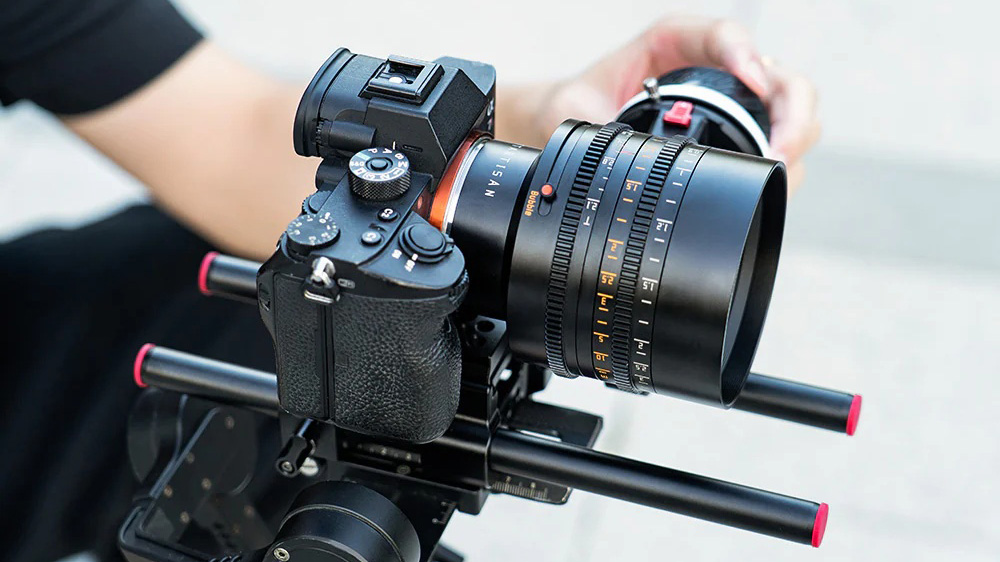The Canon EOS M6 Mark II is the most exciting EOS M mirrorless camera yet
It has the tech of the new EOS 90D but it’s smaller and cheaper
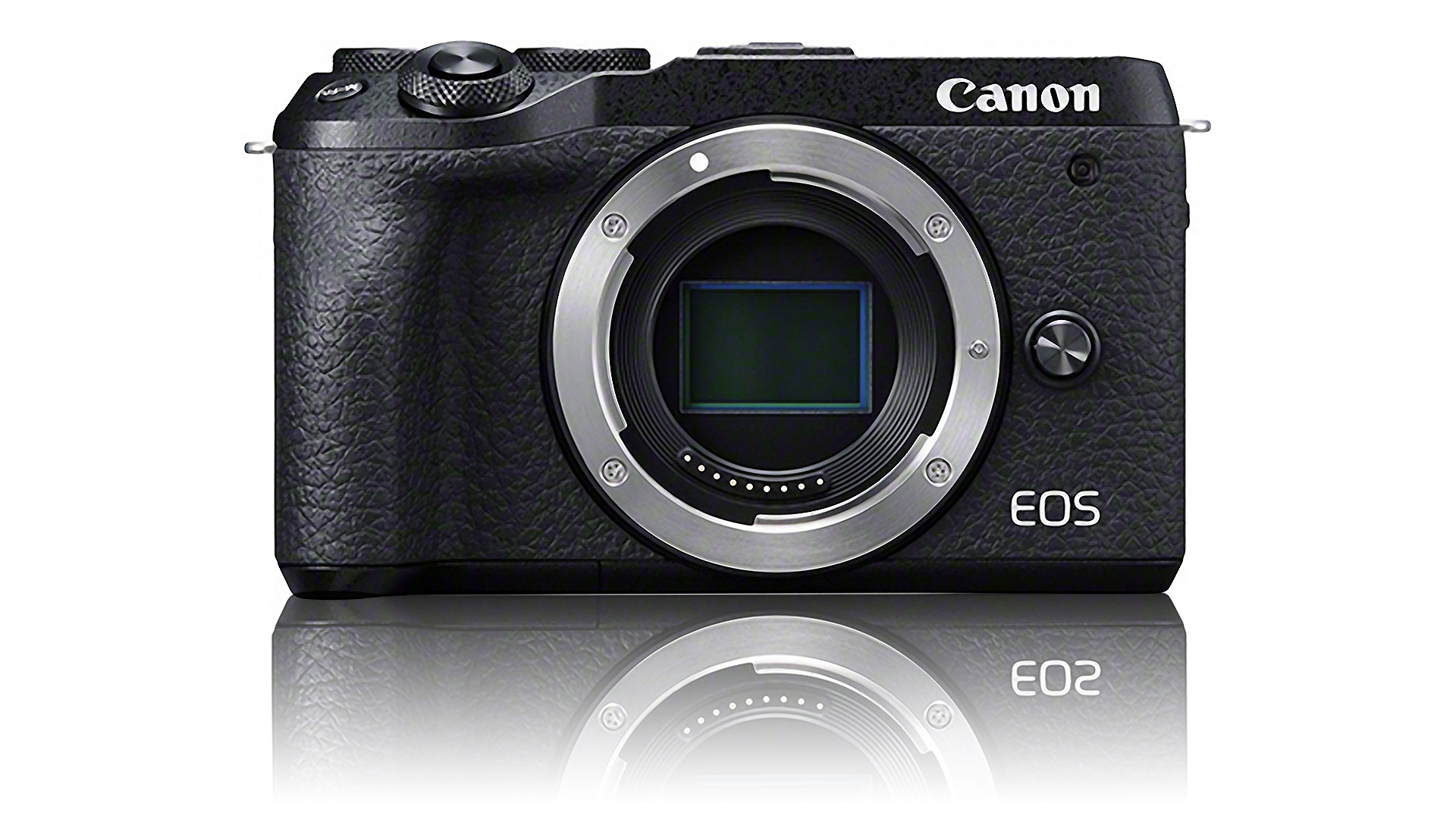
Canon has just launched two major new cameras; the Canon EOS 90D DSLR and this, the Canon EOS M6 Mark II.
Canon’s EOS DSLRs don’t need much introduction, but its mirrorless EOS M cameras have had a rockier ride. We’ve never been sure if they’re meant to be simple point and shoot cameras (EOS M100, EOS M50), pocket-sized cameras for photo enthusiasts (EOS M5) or vlogging tools (EOS M6).
Well Canon’s definitely aimed at the top end of that range with the EOS M6 Mark II. It has the same 32.5MP APS-C sensor as the EOS 90D, the DIGIC 8 processor and the same uncropped 4K video capability. Will this become one of the best cameras for vlogging?

Canon EOS M6 Mark II specifications
Sensor: 32.5MP APS-C CMOS, 22.3 x 14.8mm
Image processor: DIGIC 8
AF points: Dual Pixel CMOS AF, 143/99 AF points (depending on lens)
ISO range: 100 to 25,600 (exp. 51,200)
Max image size: 6,960 x 4,640
Metering modes: Evaluative, centre-weighted, partial, spot
Video: 4K UHD at 30p, 25p
Viewfinder: Add-on EVF (optional)
Memory card: SD/SDHC/SDXC (UHS II)
LCD: 3-inch tilting touchscreen, 1.04m dots
Max burst: 14/fps (S-AF)
Connectivity: Wi-Fi, Bluetooth
Size: 119.6 x 70.0 x 49.2mm
Weight: 398g (body only, with battery and SD card)
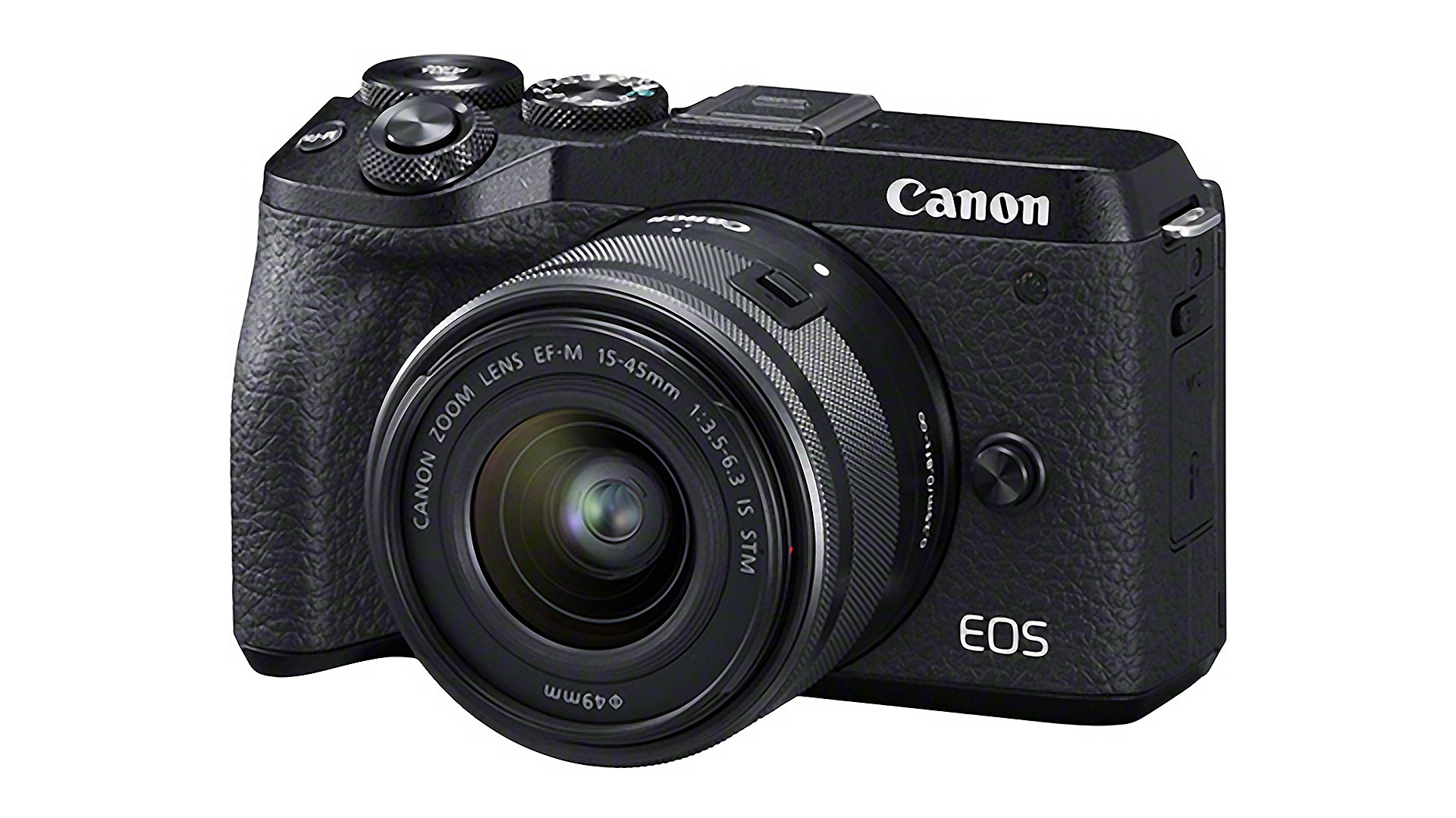
Who is the Canon EOS M6 Mark II for?
Canon says the EOS M6 Mark II is for ‘everyday life’, for capturing spontaneous moments either as still images or as video.
This puts it somewhere between a ‘street’ camera and a vlogging tool, and it’s got perfect credentials for both, thanks to its tilting touchscreen display, detachable electronic viewfinder and 4K video capabilities.
Who needs 32.5 megapixels?
Can you have too many megapixels? Probably not yet – though Canon’s new sensor does push the boundaries of photosite size and pixel pitch further than ever before in an APS-C camera.
The best camera deals, reviews, product advice, and unmissable photography news, direct to your inbox!
With over 8 million more pixels than any previous Canon APS-C DSLR, the EOS M6 Mark II matches the full frame EOS R for resolution (if not sensor size) and makes the 26MP EOS RP look just a little underpowered. The 32.5 megapixels give you a little more leeway when cropping photos and, probably just as important, keeps camera nuts worried about future-proofing their purchases right at the head of the game.
Hands-on review: Canon EOS M6 Mark II
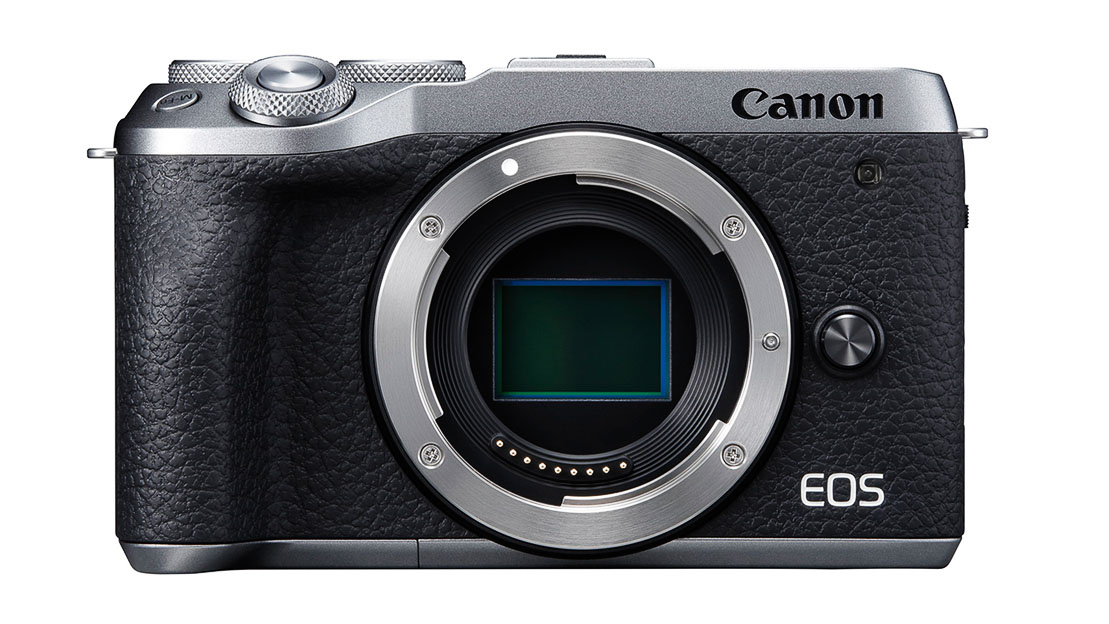
Uncropped 4K video
This is undoubtedly going to be one of the key selling points of the EOS M6 Mark II. Users of other brands might take uncropped video for granted, but on previous Canon consumer cameras the field of view in 4K video mode has been substantially narrower than for regular stills photography. If you wanted to grab a ‘wide’ shot, you’d actually need an ultra-wideangle lens to do it.
With uncropped 4K video, however, the angle of view of your lenses stays the same when you switch between the stills and 4K video modes.
It’s interesting to compare the EOS M6 Mark II with the EOS 90D for video capabilities. Normally, you’d expect the mirrorless camera to be better at video; in fact, which both cameras have microphone sockets, the EOS 90D DSLR adds a headphone socket too for monitoring sound levels during recording.
And while the EOS M6 does offer a tilting rear touchscreen, the EOS 90D goes further with a fully articulating rear screen.
Both cameras represent a big step forward in 4K video capture… for Canon. Rival makers already have full frame 4K video capability, and some (Panasonic, Fujifilm) go further with 60fps capture and/or 10-bit internal recording.
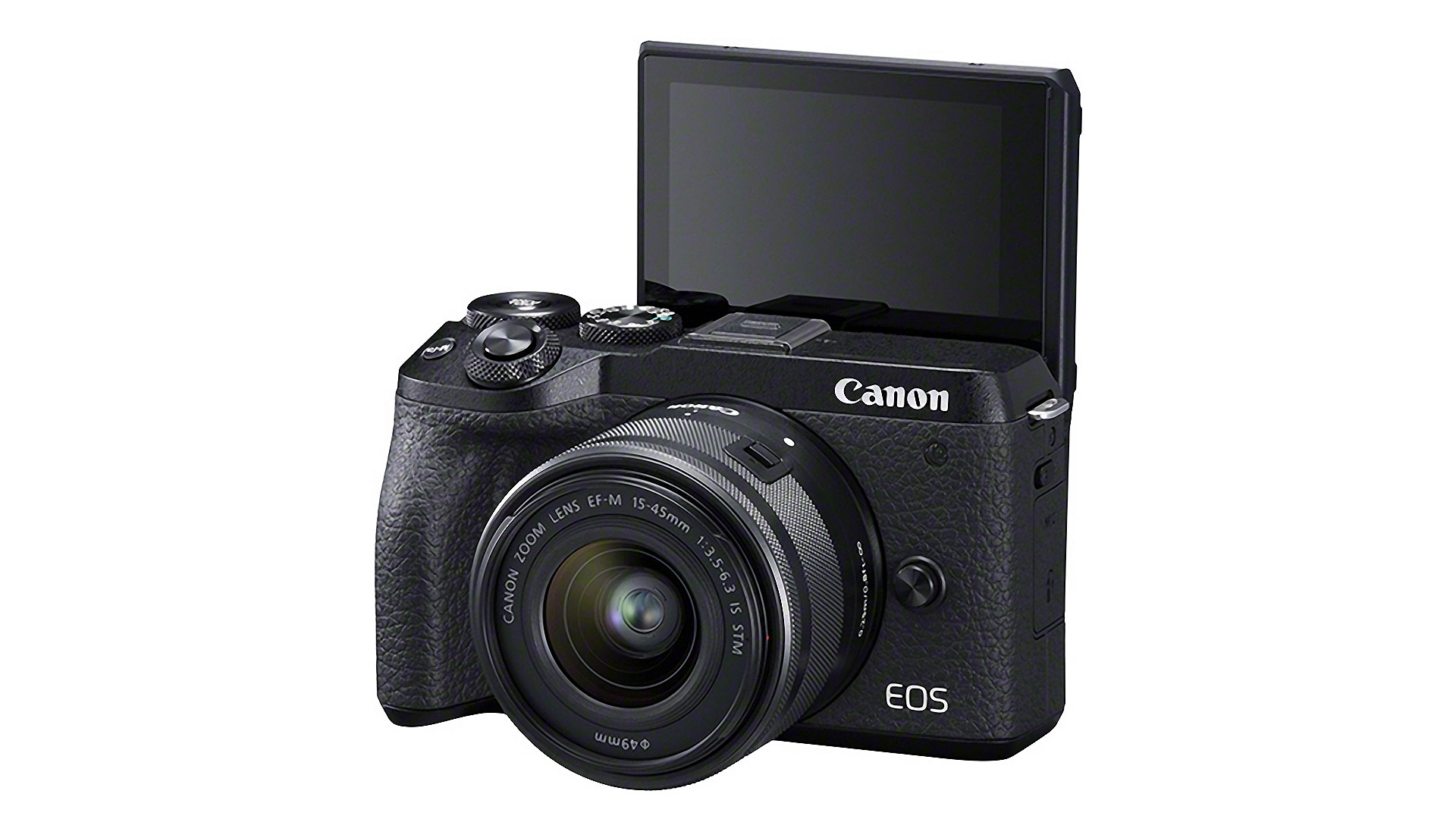
Burst mode and autofocus
The EOS M6 Mark II has a very impressive 14fps continuous shooting frame rate, but a fairly modest buffer capacity of 80 large JPEGs. It does have a 30fps ‘Raw Burst’ mode we’ve seen on the PowerShot G5 X Mark II and G7 X Mark III, but this operates in a limited ‘auto’ mode so we haven’t yet had a chance to see how this works.
In both cases, the EOS M6 Mark II offers continuous autofocus tracking and eye tracking, using the latest incarnation of Canon’s Dual Pixel CMOS AF system. This covers 88% of the frame width and 100% of the height.
The AF system is also more sensitivity than this camera’s predecessor, focusing in light levels right down to EV-5 (with an f/1.4 lens or faster).
With a viewfinder… or without?

Perhaps controversially, Canon has not included a built-in electronic viewfinder. That wouldn’t be surprising on a low-cost mirrorless camera, but this is right at the top of the range.
What the EOS M6 Mark II does have, though, is an accessory slot n the top where you can attach an EVF-DC2 electronic viewfinder. The position means that it’s separated from the camera but on the lens’s optical axis, and it does mean the EOS M6 Mark II can be adapted for video or stills photography. If you want the EVF, look out for dealer bundles which save money by including it as a kit.
Other EOS M6 Mark II features include a focus bracketing mode (you need Canon’s desktop Digital Photo Professional software to merge them), a Digital Lens Optimizer and Diffraction Correction and support for UHS-II memory cards
Canon EOS M6 Mark II: availability and price
The Canon EOS M6 Mark II will be available in either a black or silver finish and will go on sale from September 2019 at a price of $849.99 / £869.99 body only or as a $1099.00 / £1,119.99 kit with the EF-M 15-45mm IS STM lens and EVF-DC2 electronic viewfinder.
Read more:
• These are the best mirrorless cameras right now
• Which is the best Canon camera to get?
• We pick the best cameras for vlogging

Rod is an independent photography journalist and editor, and a long-standing Digital Camera World contributor, having previously worked as DCW's Group Reviews editor. Before that he has been technique editor on N-Photo, Head of Testing for the photography division and Camera Channel editor on TechRadar, as well as contributing to many other publications. He has been writing about photography technique, photo editing and digital cameras since they first appeared, and before that began his career writing about film photography. He has used and reviewed practically every interchangeable lens camera launched in the past 20 years, from entry-level DSLRs to medium format cameras, together with lenses, tripods, gimbals, light meters, camera bags and more. Rod has his own camera gear blog at fotovolo.com but also writes about photo-editing applications and techniques at lifeafterphotoshop.com
